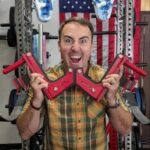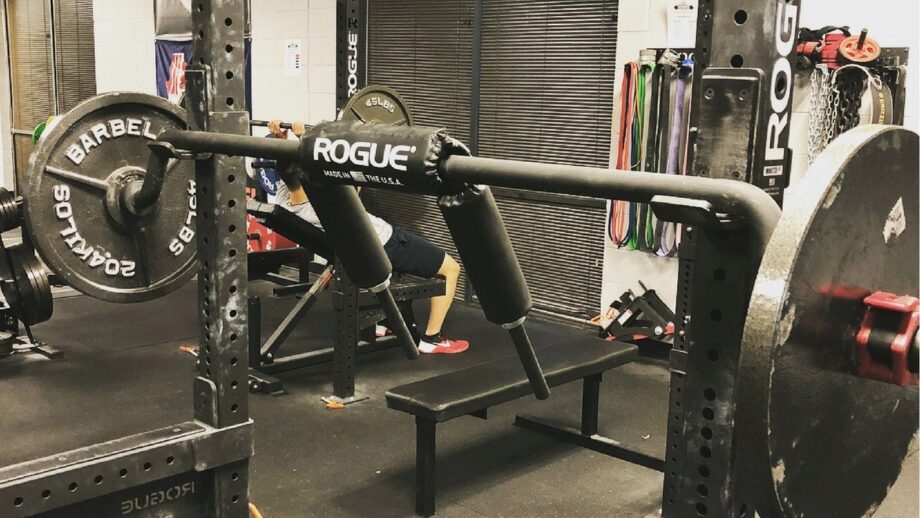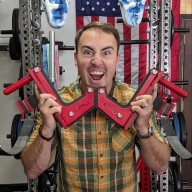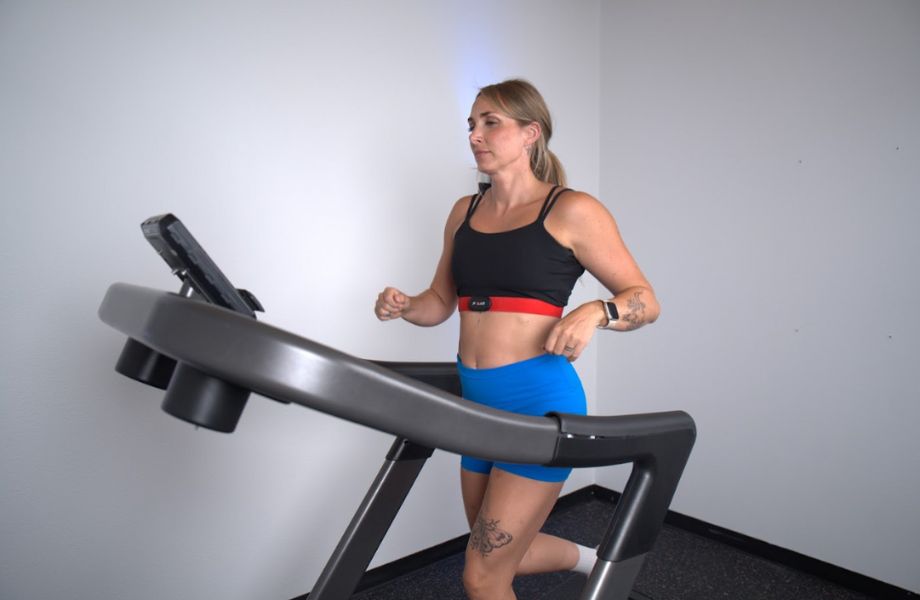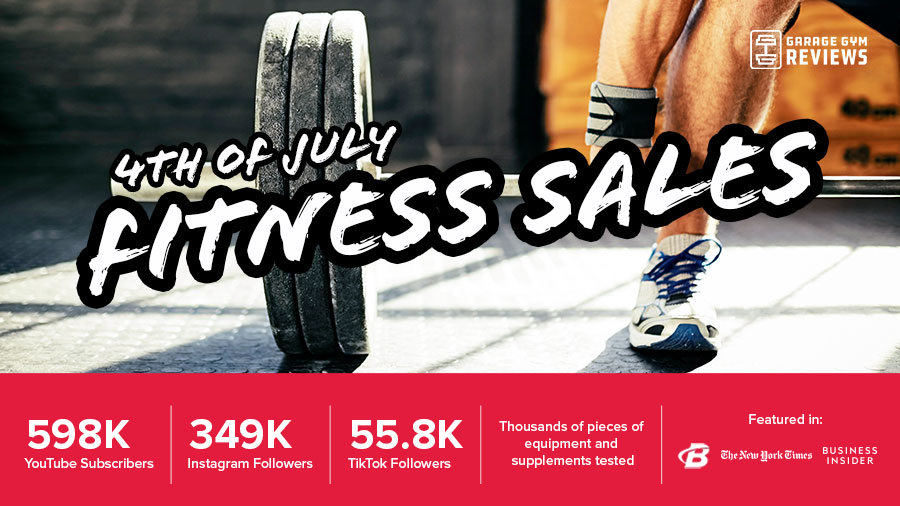When it comes to adding specialty bars, such as safety squat bars, to your garage gym, the main question is often: Do we even need specialty bars?
Safety squat bars were originally designed to help train around injuries, but that is not their sole purpose. Although an individual can get strong from a combination of powerlifting, Olympic lifts and some creative programming, specialty bars can also help target different muscle groups and break up the monotony of training.
In my Rogue SB-1 Safety Squat Bar review, I break down one of the most popular speciality bars on the market to see if it will add enough to your workouts to make it beneficial to purchase and how it compares to the plethora of competitors.
Why You Should Trust Us
I’ve tested and reviewed practically every safety squat bar on the market and written about the best safety squat bars.
To help you build your home gym, I’ve researched 20 safety squat bars and tested over 15 of them. I put them through training sessions in my garage gym featuring: regular squats, box squats, front squats, and back squats, good mornings, lunges, and JM Presses (yes, it can be done.)
Rogue Fitness
Rogue SB-1 Safety Squat Bar
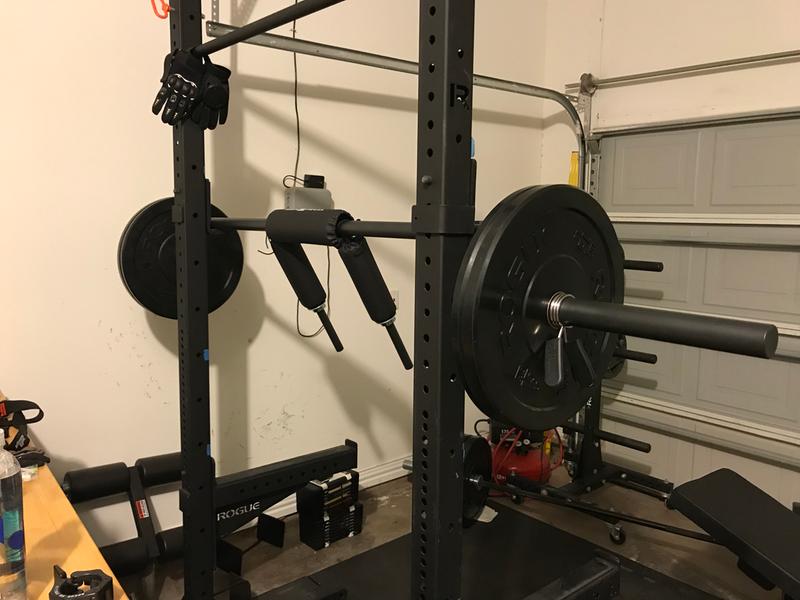
Product Highlights
- Weight: 70 lbs
- 1.5″ diameter formed solid steel shaft
- 1″ diameter formed solid steel handles
- Machined Olympic sleeves
- Fully welded design
- Heavy duty vinyl and closed cell foam pads
Pros & Cons
Pros
- The metal portion is highly durable
- Fully-welded design
- Cerakote finish
Cons
- Sleeves and frame gets scuffed easily
- Padding is not the most durable
- Stitching comes undone rather easily
Bottom Line
A person who is serious about gaining strength in a safe and versatile way will not regret making this purchase. Although the EliteFTS SS Yoke Bar is a superior safety squat bar in our opinion, the Rogue SB-1 doesn't fall far behind.
A Quick Look at the Rogue SB-1 Safety Squat Bar
Rogue Fitness needs little introduction in the fitness community. It is the official equipment supplier for USA Weightlifting, the Arnold Strongman Classic, the World’s Strongest Man competition, and the CrossFit Games. Since its founding in 2006, Rogue has manufactured tough, durable equipment for every category of athlete.
While the Rogue SB-1 Safety Squat Bar is both versatile and tank-like, it could definitely benefit from some updates and upgrades (we hear rumblings that these are coming). Although there are improvements we would like to see made, the heavy duty 70-pound Rogue SB-1 Safety Squat Bar is stout and it can handle whatever weight you load on the bar.
Coop’s Tips
- Safety squat bars are more versatile than other speciality bars, allowing you to use this bar often
- The length of the bar may present a challenge getting it inside
- You will need plenty of storage space for this beast
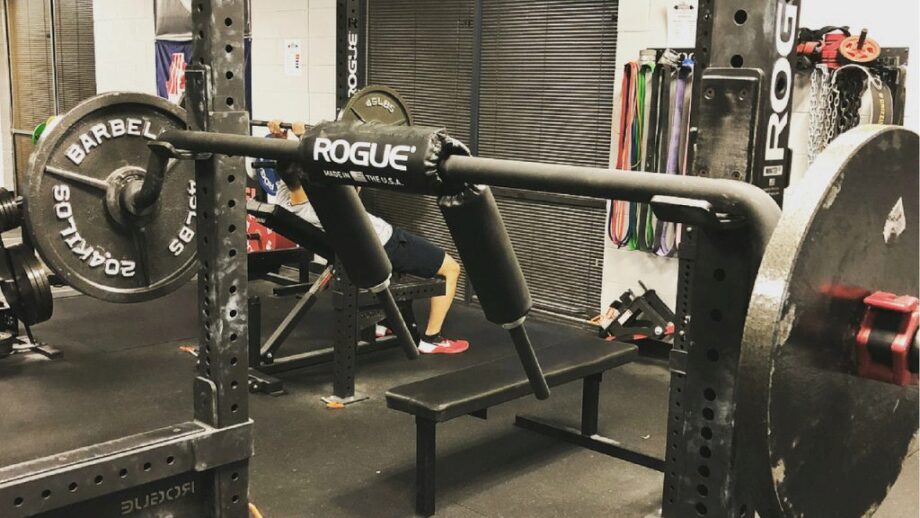
My Favorite Things:
- The metal portion of Rogue SB-1 Safety Squat Bar will last forever
- Fully-welded construction
- The Cerakote finish is a nice improvement
My Callouts:
- The bar gets marked up with normal use, especially the Cerakote sleeves
- Padding breaks down after normal wear and tear
- The stitching used on the vinyl comes undone easily and has been known to rip
Is the Rogue SB-1 Safety Squat Bar Worth It?
When I first reviewed the Rogue SB-1 Safety Squat Bar in 2018, I stated that it was incredibly solid and that it would serve your strength needs for years to come. And, this is still true. However, today there is a lot more competition, not only by other companies, but even from within Rogue. I would like to see Rogue make some upgrades, particularly to the padding and stitching, before stating that it is worth the almost $450 price sticker for most home gym owners.
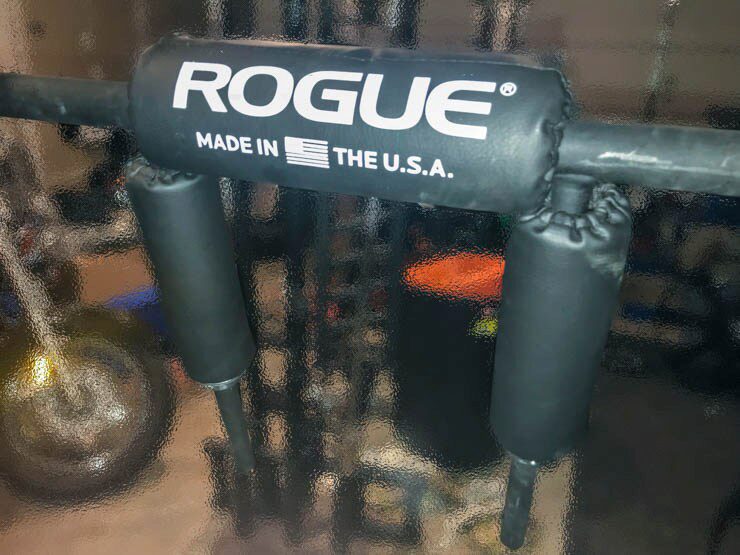
Great for:
- Athletes training around injuries
- Building strength of specific muscles
- People who invest in long-lasting pieces of equipment
Not recommended for:
- Those looking for budget-friendly speciality bars
- Garage gyms with limited space
- Athletes who like a snugger fit on their safety squat bar
Rogue SB-1 Safety Squat Bar Specs
| Footprint | 89” x 21” x 10” |
| Weight | 70 lbs |
| Weight capacity | Tested on 1000 lbs (5.5” on center sleeve drop from shaft) |
| Color | Black/Gray |
| Upholstery | Vinyl |
| Foam Type | Closed Cell Foam |
| Made in the USA | Yes |
| Shaft | 1.5” |
| Handles | 1” |
| Material | Solid steel |
| Finish | Cerakote |
Do You Need to Use a Safety Squat Bar?
Safety squat bars are designed so that the bar sits around your neck and across your traps with handles that extend forward. This eliminates the external rotation and the straining that often creates shoulder pain. It takes pressure off of your wrists and helps save your lower back. All of this helps lifters to squat without pain.
Although safety squat bars were originally designed to help train around shoulder, elbow, wrist, and other injuries, they help build strength in ways that straight bars don’t because safety squat bars target specific muscle groups. This is because the camber instantly starts to push you forward when you unrack the weight. The bar forces you to engage to stay upright, and in doing so, helps build your back and core strength. Additionally, using speciality bars in training can improve your standard barbell squat and your deadlift.
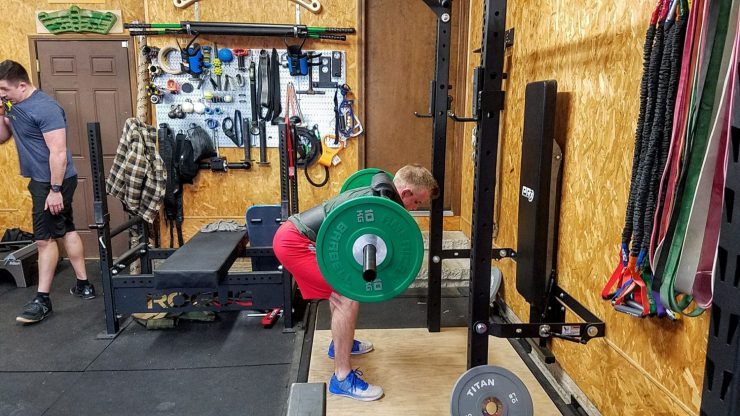
Training With the Rogue SB-1 Safety Squat Bar
So how does the Rogue SB-1 Safety Squat Bar (SSB) feel while you’re lifting? The first thing that you’ll probably notice is that when you unrack this bar with any amount of weight on it, you will feel it pushing you forward. That feeling is credited to the 5.5-inch camber.
The padding is fairly comfortable across your back and traps. It’s important to note that you are still lifting weights with a bar on your back, and comfort is very subjective.
The next element to note is the handles on this bar. They are long enough to put your arms in a comfortable position. Holding onto the bar feels natural during squats, good mornings, or any of the other exercises one can do with the SSB. This is a huge plus as I have used some bars with shorter handles that do not feel as comfortable.
When squatting, the bar feels balanced. I have no trouble maintaining a solid position under the bar and completing the squats with correct form. Re-racking the bar inside a Rogue R-3 doesn’t present any problems. (I have had re-racking trouble with different specialty bars such as the Rogue MG-4 Multi-Grip Bar.)
This bar is also great for good mornings because it takes the strain off your shoulders and the bar sits on your upper back very nicely without the fear of it falling off.
Unilateral movements such as lunges are made easier with the stability of this bar on your back. Additionally, I think one often-overlooked use for the safety squat bar is for conditioning. Loading up weight and having an athlete walk for distance (.25 to .5 mile) taxes their breathing and forces them to work at staying upright.
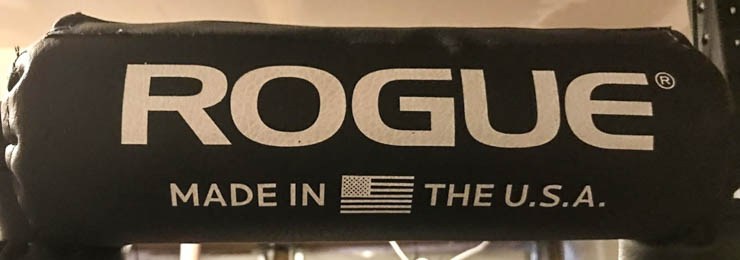
Construction
The Rogue SB-1 Safety Squat Bar is constructed with a 1.5-inch diameter formed solid steel shaft and 1-inch diameter formed solid steel handles. This makes for a solid bar that flexes very little.
Finish
In earlier versions of this safety squat bar, there were reports of the paint chipping off. When Rogue started using a Cerakote finish–which helps with corrosion–it seems to have eliminated the “chipping” issue. It’s still important to note the Rogue SB-1 Safety Squat Bar does get marked up easily when putting the bar back in the squat rack and placing plates on the collars.
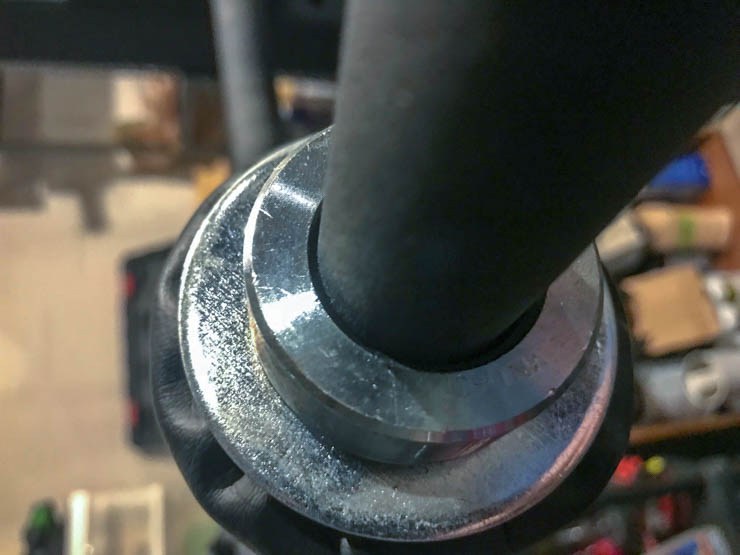
Although bars with the powder coat finish like this safety squat bar show wear and tear on the collars from plate loading, I would like to see the rest of the bar hold up better from racking in and out of the j-cups.
It is discouraging for me, and many customers, to pay nearly $400 for a bar and everything not be perfect. Although Cerakote is superior to powder coat on this bar, in my opinion, I still have gripes with the use of Cerakote on the sleeves as it’s known to scratch easily.
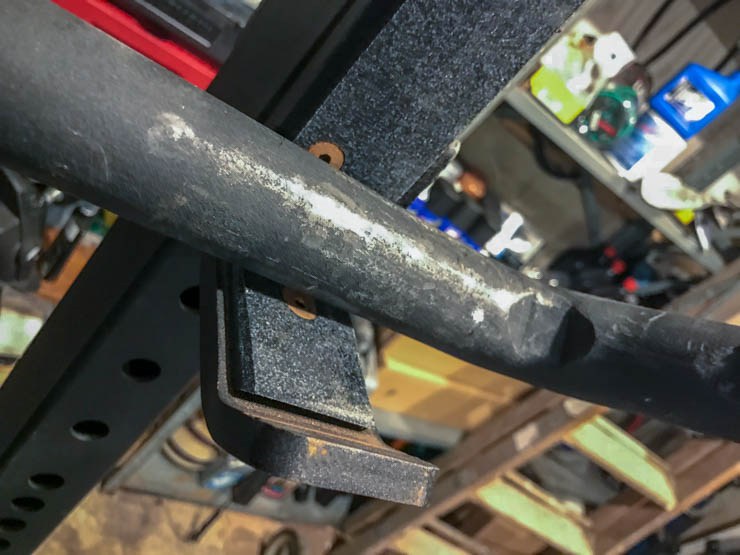
Ultimately, what I’d love to see is the same black zinc coating that is used on the Rogue Ohio Bar 2.0S.
Padding
The most important part of the padding is the foam used. Rogue uses a closed-cell foam that is very dense.
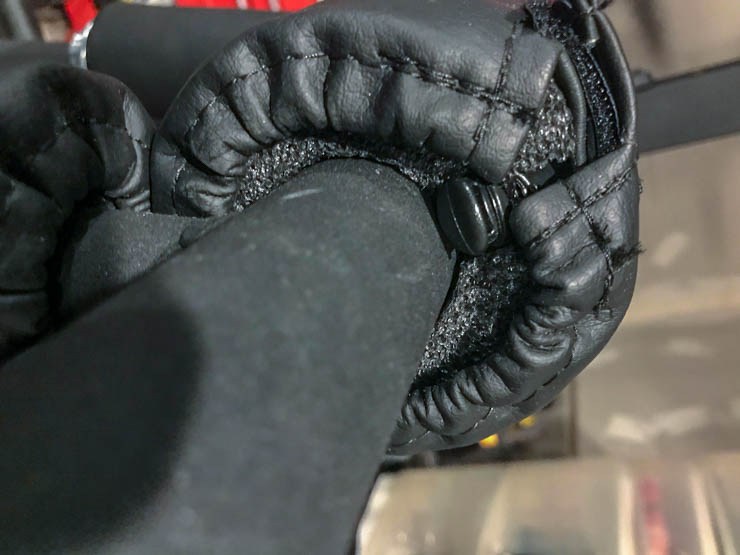
When I reviewed the Rogue SB-1 Safety Squat Bar in 2018, I felt that when compared to the Crepinsek Squat Safety Bar (Crepinsek has now folded), the padding was superior. This was because after I used the bar for a couple of months, the foam pads were showing no sign of breaking down.
However, after three years, I am not satisfied with how the Rogue padding has held up through the normal wear and tear that would occur in that time frame and many people stronger than I am have reported even more break down of the foam and vinyl.
Stitching and Vinyl
Before I purchased the bar in 2018, I did what most people would do: I viewed the comments on Rogue’s web page. A major problem that was reported via the comments was stitching coming out of the vinyl.
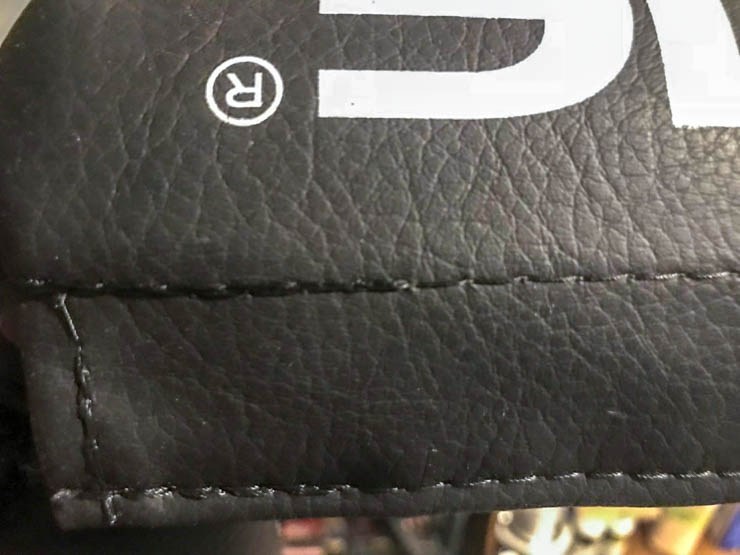
In my initial review, I had not had a problem with the stitching after using the bar for two months. But even then when I took a closer look at the stitching, I saw where it could possibly break down and become a problem in the future.
And, now I agree with those comments that I read.
The vinyl pad is sporting the only logo you will find on this bar: a white Rogue logo and “Made in the USA” with the American flag on the back of the pad.
Durability
This bar is incredibly solid and that durability will allow it to serve your strength needs for many years. The bar was tested with weight up to 1,000 pounds and remained solid. However, until Rogue comes through with some needed updates and improvements, we don’t think that it is worth the hefty price tag.
How the Rogue SB-1 Safety Squat Bar Stacks Up Against the Competition

| Rogue SB-1 Safety Squat Bar | Titan Safety Squat Olympic Bar V2 | Kabuki Transformer Bar | |
|---|---|---|---|
| Price | $445 | $300 | $670 |
| Weight | 70lb | 61lbs | 55lbs |
| Weight Capacity | 1,000 lbs | 1,500 lbs | 1,500 lbs |
| Length | 89” | 90.5” | 90.75” |
Showing the constant evolution of the fitness equipment industry, when I shared the Rogue SB-1 Safety Squat Bar review in 2018, I didn’t even mention what I now consider the best overall squat safety bar: the Titan Safety Squat Olympic Bar V2.
At that time, I thought the EliteFTS SS Yoke Bar as the overall best option and the multi-function Kabuki Strength Transformer Bar was the best option if price were no object.
The Kabuki is still a great upgrade option, but I now view the EliteFTS, with it’s similar price point to the Rogue SB-1 Safety Squat Bar is now a toss-up with the Rogue bar for “best other option.”
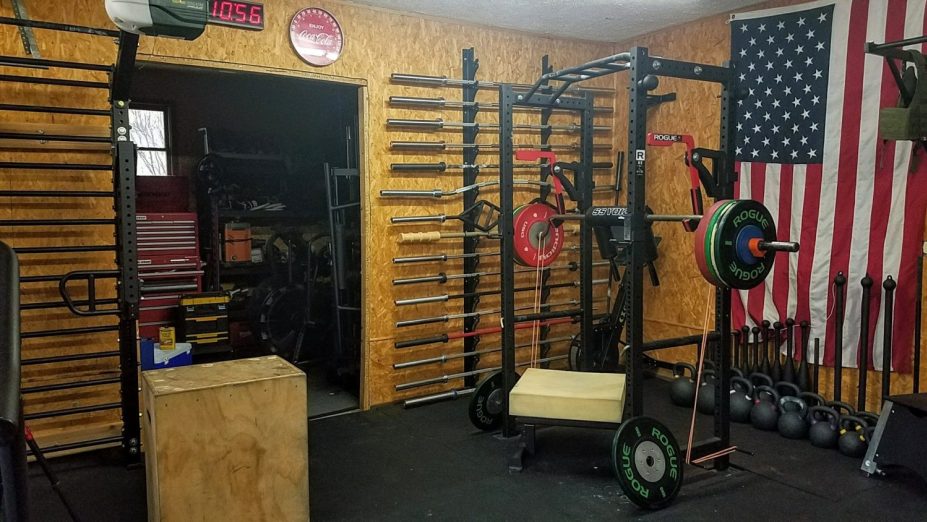
Customer Experience
Rogue offers a 30-day money back guarantee for unused equipment. There is no specific warranty information for the SB-1 Safety Squat Bar.
Customer Reviews
With more than 100 reviews on its website, the Rogue SB-1 Squat Safety Bar has received 4.8/5 stars.
Many of the four and five star reviews for this bar stated that it was great for the users shoulder issues and that it was a high-quality, durable product. When customers pointed out negative aspects of the Rogue SB-1 Squat Safety Bar, it was mainly over the padding. One review stated that the padding became uncomfortable after adding a certain amount of weight or spending a certain amount of time under the bar.
Final Verdict of Our Rogue SB-1 Safety Squat Bar Review
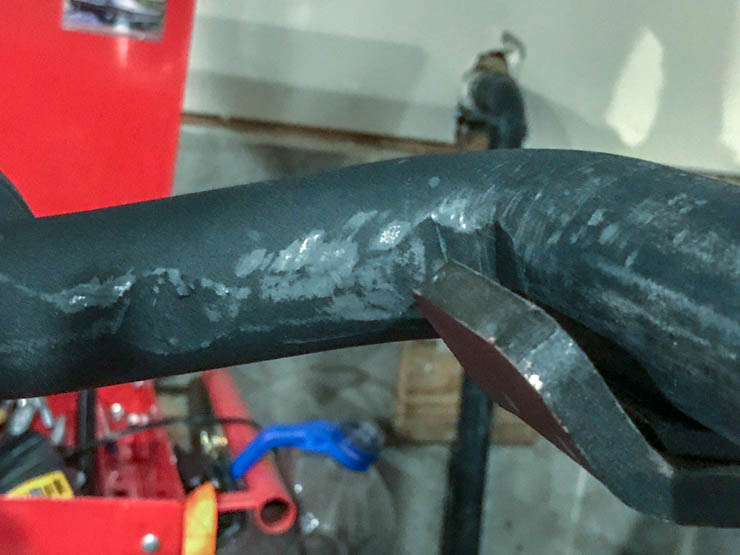
Rogue is known for building tough, durable equipment, and the Rogue SB-1 Safety Squat Bar is no exception to that. It meets all of my functionality expectations. The SSB will allow athletes and lifters to improve in both strength and conditioning. However, given the price point and the cosmetic issues, specifically in the padding and the stitching, I think that there are better safety bars on the market.
Full Rating of the Rogue SB-1 Safety Squat Bar
Rogue SB-1 Safety Squat Bar

The Rogue SB-1 Safety Squat Bar is one of the most popular specialty bars available. Although there are improvements we would like to see made, The Rogue SSB is a stout bar that can handle whatever weight you throw at it.
Product Brand: Rogue Fitness
Product Currency: USD
Product Price: 445
Product In-Stock: InStock
4
The Rogue SB-1 Safety Squat Bar FAQs
Are safety squat bars worth it?
Although safety squat bars were originally created to help people train around injuries, they have been shown to be much more than a one-trick pony. Safety squat bars can help improve squat and deadlift performance and help target muscles such as the quads, glutes and hamstrings. The versatility of safety squat bars can add value to workouts and its durability provides longevity.
Can you squat with a safety squat bar?
Yes, absolutely! Safety squat bars were designed to help you squat, even if you’re dealing with shoulder, arm or wrist issues. Additionally, they help build strength in specific muscle groups.
What Safety Squat Bar does “The Rock” use?
Dwayne “The Rock” Johnson has multiple home gyms that could make people weep. Given that he is a world-famous, multi-millionaire movie star, Dwayne spares very little expense when it comes to equipment. And, his safety squat bar is no exception. The Rock uses the Kabuki Strength Transformer, which is one of our favorites.

